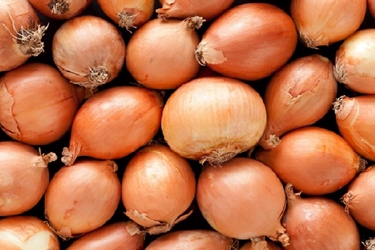nCa Report
Kazakhstan, Uzbekistan, Kyrgyzstan, and Tajikistan have imposed ban on the export of onions. Quite clearly, there is some shortage of onions in the markets of Central Asia.
The fresh crops will take a while to reach the consumers and in the meantime the situation of prices and supplies will get worse before it gets better.
There are several reasons for the deficit of the humble onion.
This year Central Asia saw a severe spell of frosty winter, with temperature plunging to below 25-30 C for days together. This affected the onion stocks. As it is, the onions are stored in uninsulated warehouses across the region because usually that is enough to keep them safe during the winter. However, this winter, unseen for the last 40 years, took its toll on many things including the onion.
There is also the flood situation in Pakistan, one of the main suppliers of onions to Central Asia. The heavy rains and floods last years prevented the sowing of crops, onions being no exception. As a result, at present, Pakistan is a net importer of onions.
The conflict in Ukraine has impacted the market mix. The southern part of Ukraine, which accounts for about 80% of the total production of onions in the country, is far from returning to normalcy for now. Therefore, Ukrainian onions are absent from the market and it has become a net importer of onions.
Global fresh onion market review – are prices about to skyrocket? – 24 January 2023
Central Asia has its own cultivation of onions and they are frequently available for export. As with many other commodities, onion market is also subject to back and forth swing — for some parts of the year a country could be exporting onions and for some months in the year it could be importing the onions.
According to the analytical projections the prices of onion in Central Asia are already high for this part of the year but they could reach all-time high, breaking the previous records, some time in the middle of March to the middle of April.
The traditional suppliers of onions to Central Asia include Iran, Turkey, Pakistan, and to a lesser extent several other countries.
With the arrival of the holy month of Ramadan – around 23 March to 22 April 2023 – the prices of onion will possibly shoot further upward because the consumption of onions increases during this month in the onion exporting countries in the neighbourhood of this region.
The current prices of onion in Turkey (Turkiye) are higher than usual and the new crop will be available somewhere in the middle of April 2023. Iraq has increased the imports of onion from Turkey and that puts a dent into the available surplus for other countries.
Prices in Iran are also high, near the same level as Turkey. The new harvest will take several weeks to make it to the market.
The Netherlands, one of the largest onion exporters in the world and the largest in Europe, saw its crop affected by the drought, resulting in reduced yields.
The ability of China to export onions may play a key role depending on the quantity and price it can offer.
Globally exported onions were worth a total US$3.95 billion in 2021. [Reliable data in tabulated form for 2022 is still not available.]
Here is some other data for 2021:
Onions Exports by Country
Below are the 15 countries that exported the highest dollar value worth of onions during 2021.
- Netherlands: US$780.7 million (19.8% of total exported onions)
- India: $449.5 million (11.4%)
- China: $435.7 million (11%)
- Mexico: $413.3 million (10.5%)
- United States: $263.8 million (6.7%)
- Spain: $166.4 million (4.2%)
- Pakistan: $145.7 million (3.7%)
- Egypt: $141.6 million (3.6%)
- New Zealand: $111 million (2.8%)
- France: $104.2 million (2.6%)
- Peru: $99.2 million (2.5%)
- Poland: $77.8 million (2%)
- Iran: $56.5 million (1.4%)
- Canada: $55.3 million (1.4%)
- Italy: $51.6 million (1.3%)
Onion exports by country
https://www.worldstopexports.com/onions-exports-by-country/
Countries Earning Largest Trade Surpluses from Onions
The following countries posted the highest positive net exports for onions during 2021. Investopedia defines net exports as the value of a country’s total exports minus the value of its total imports. Thus, the statistics below present the surplus between the value of each country’s exported onions and its import purchases for that same commodity.
- Netherlands: US$623.3 million (net export surplus down -9.7% since 2020)
- India: $435.6 million (up 56.1%)
- China: $435.6 million (down -12.1%)
- Mexico: $372.9 million (up 11.2%)
- Egypt: $141.6 million (down -19.1%)
- Pakistan: $122.7 million (up 29%)
- New Zealand: $110.8 million (up 10.8%)
- Spain: $105 million (down -0.6%)
- Peru: $99.2 million (up 4.5%)
- Iran: $56.5 million (down -59.1%)
- Turkey: $44.7 million (down -12.7%)
- Poland: $39.9 million (down -9.8%)
- Myanmar: $35 million (down -40.1%)
- Afghanistan: $33.2 million (down -15.6%)
- Niger: $31.3 million (up 122.8%)
/// nCa, 3 February 2023 [Featured image credit EastFruit]

